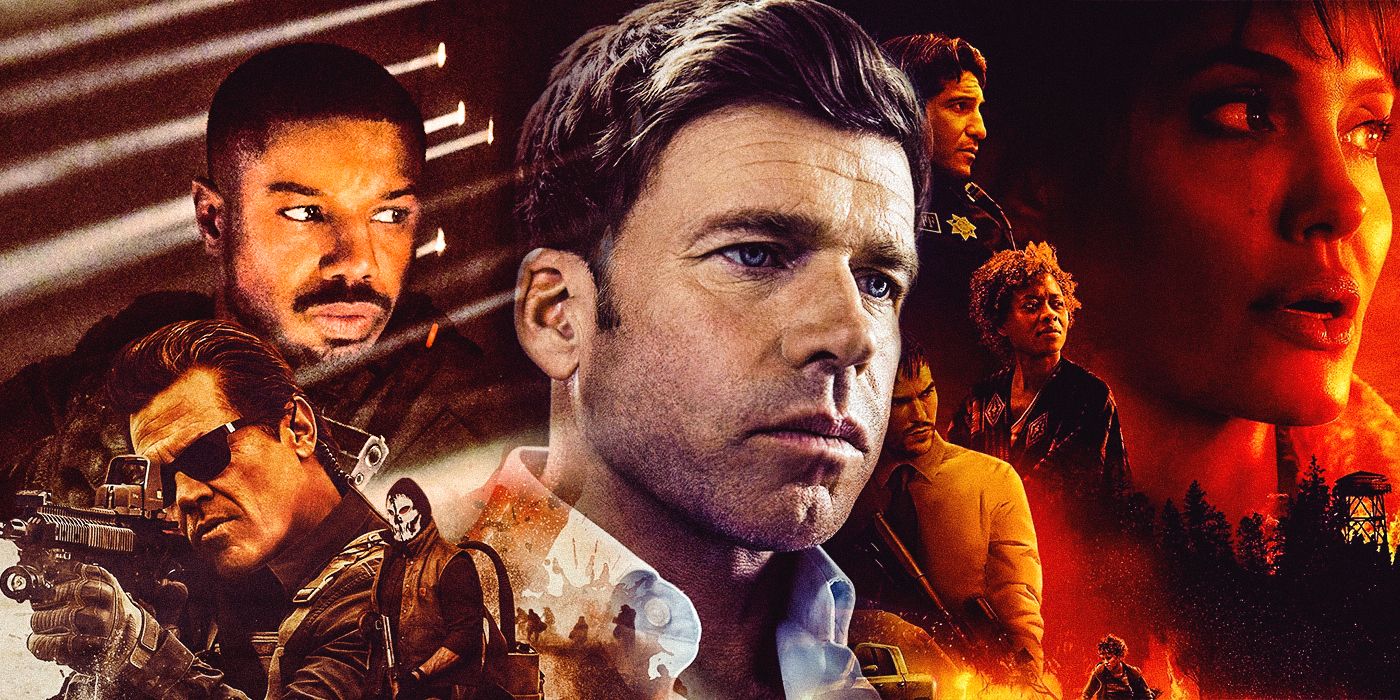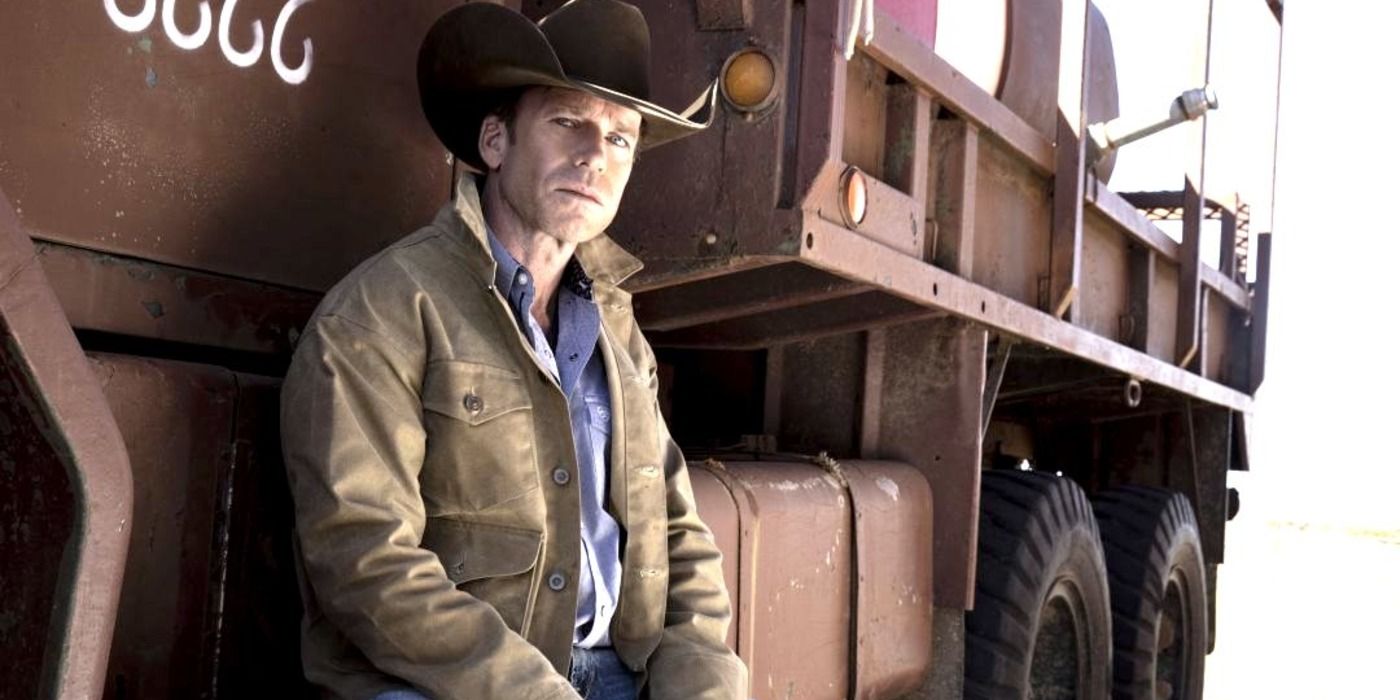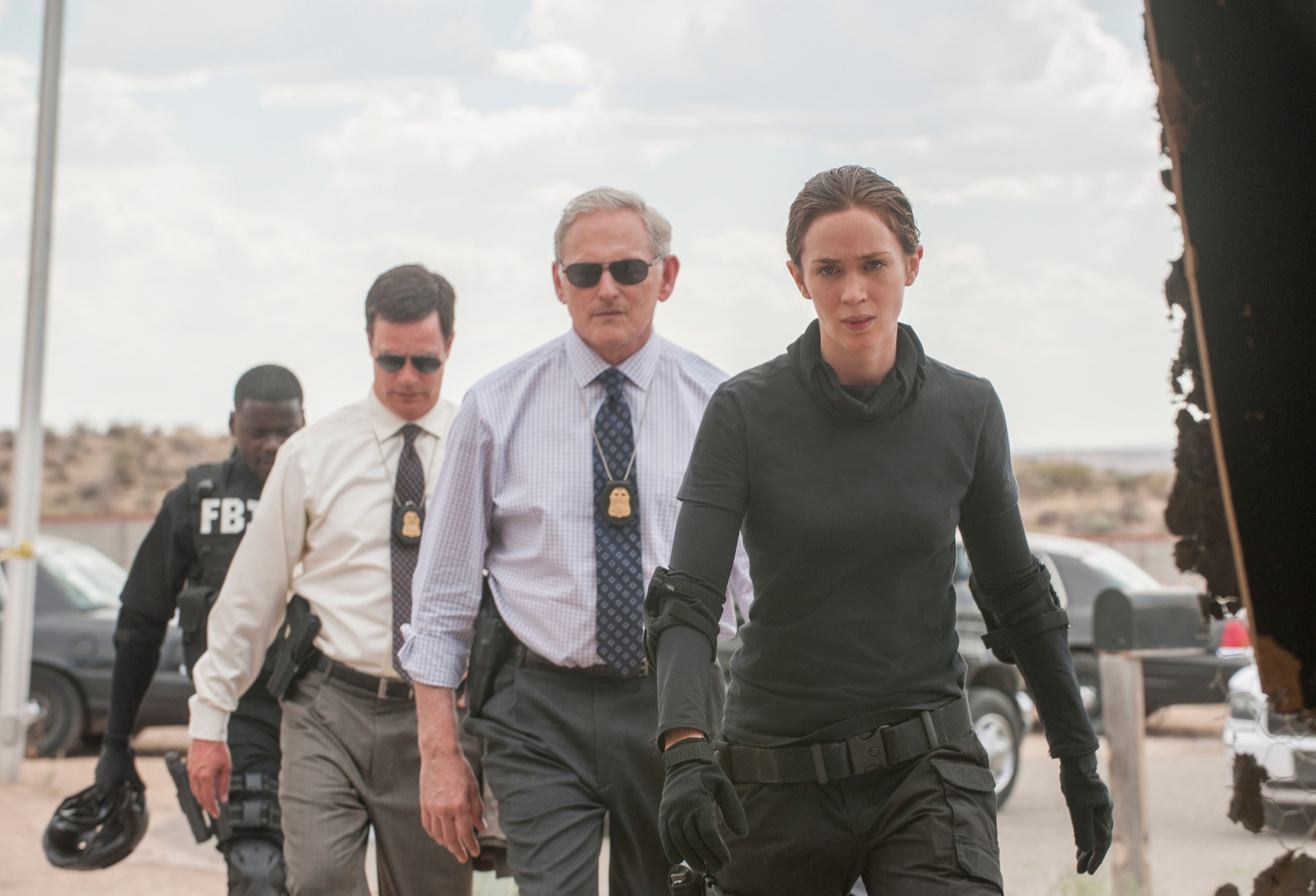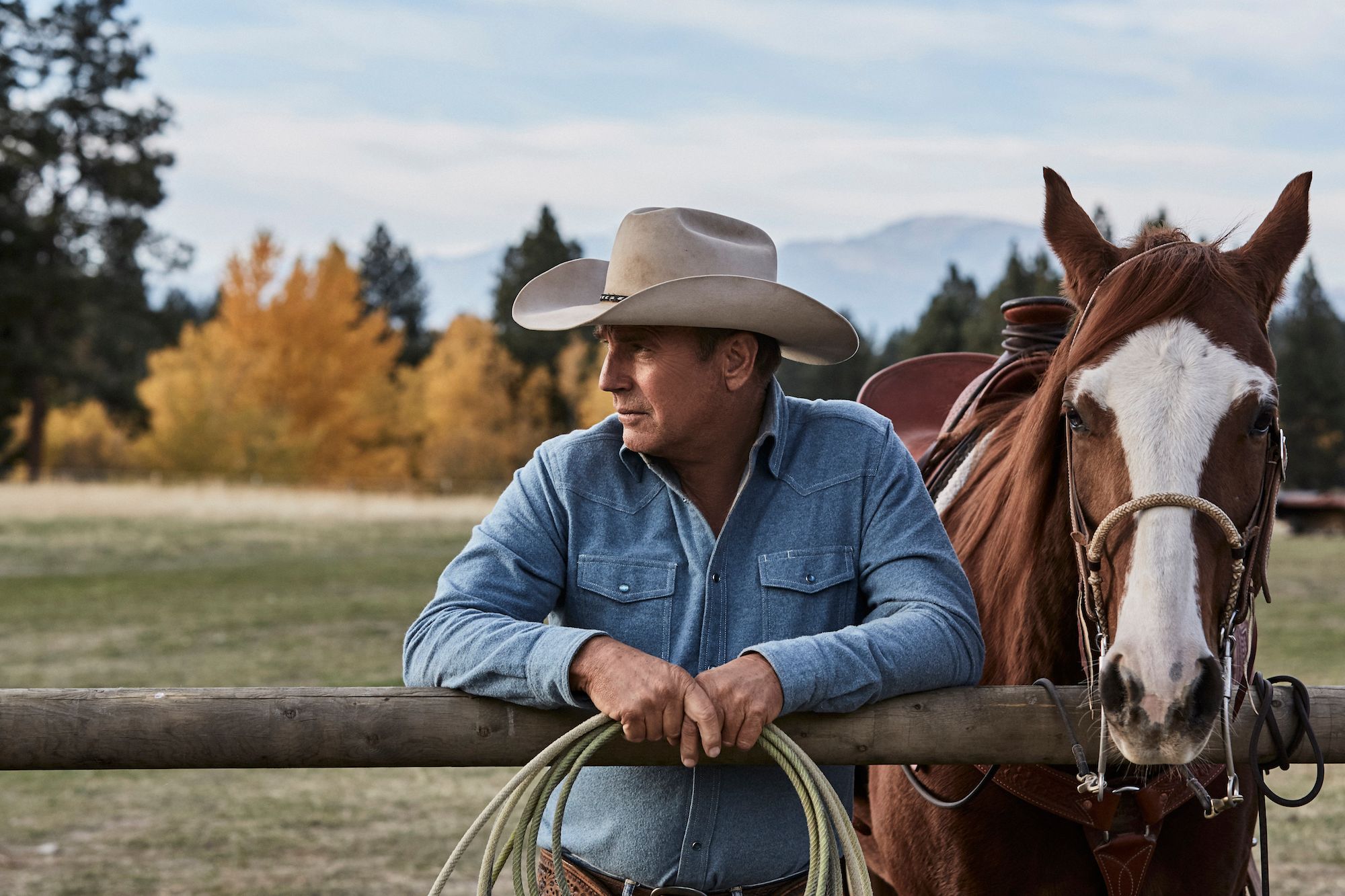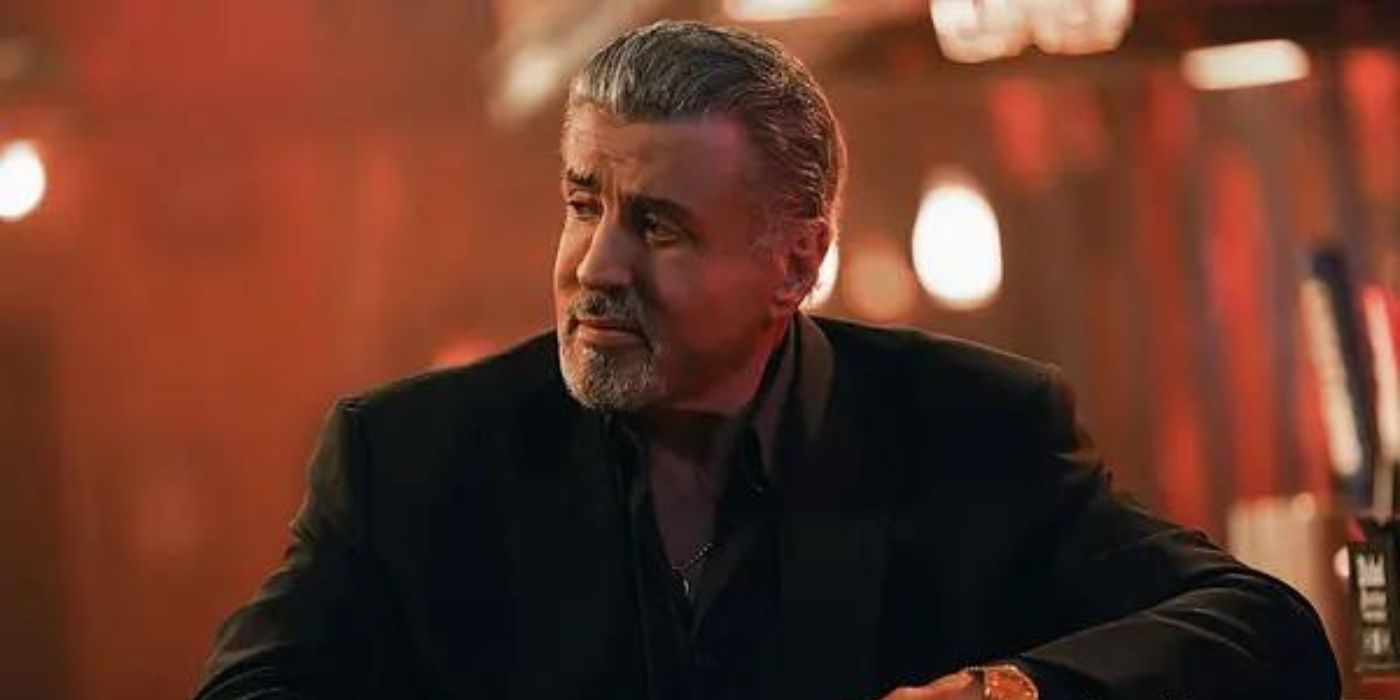The conversation that would change the trajectory of Taylor Sheridan’s career (and life) was a terse one.
“You’re right that he probably deserves to make more, but we’re not going to pay him more because guess what, he’s not worth more. That’s what he’s worth. There’s 50 of him. He is 11 on the call sheet. That’s what that guy is, and that’s all he’s ever going to be."
At least, that’s how Sheridan remembers it. It was 2010, and a business attorney was explaining to the actor's representation why Sheridan — now the writer and director behind some of television’s biggest shows — was being offered significantly less money than his fellow cast members of Sons of Anarchy.
His role as Sheriff David Hale on the series had been his big break, and at the ripe age of 38, it was one he had worked for tirelessly. Raised in a small town west of Dallas, he was discovered by a Chicago talent agency as a young man in Austin, where he was mowing lawns and painting houses after dropping out of college. It was a chance encounter that would result in Sheridan spending the next 15 years of his life as a working actor, traveling back and forth between New York and Los Angeles as he cut his teeth with small parts on shows like Law and Order and Walker, Texas Ranger. They were years he mainly spent broke, at one point living out of his truck as he struggled to make ends meet.
But now, he had a recurring role on a hit show. Something he had dreamed of, the envy of all his working actor friends. And he opted to throw it all away: “I decided right there that I didn’t want to be 11 on the call sheet for the rest of my life."
Taylor Sheridan's 'Sons of Anarchy' Departure Sent Him on a New Path
So Sheridan quit Sons of Anarchy, and the writers killed his character off going into Season 3. On the verge of 40 with no job and his first child on the way, he decided the only path forward in Hollywood was if he forged one for himself. As he explained to Cowboys and Indians, "I wanted to tell stories that mattered to me, and not tell other people’s stories. I wanted to tell stories about my life and the lifestyle that I grew up in, and the world that I came from."
Sheridan knew all too well Hollywood had no interest in telling those stories. They would only get to the screen if he created them himself. Emboldened after years of reading hundreds of bad scripts as a working actor, Sheridan decided he could write something better (despite having no writing experience to speak of). His wife Nicole agreed and maxed out her credit card so that he could buy the screenwriting program Final Draft. Armed with a new purpose, he began to pen the kind of stories that resonated with him, using everything he had learned as a journeyman actor to inform his writing.
It was a straightforward approach. Having played many smaller roles, Sheridan strove to give even the most minor characters a satisfying arc. He also abandoned a hallmark of network television: moving the story forward through dialogue and exposition. As he told Deadline,
“There’s almost no exposition in my dialogue, and I intentionally broke a lot of rules of the structure of storytelling because I’d been held to them so long...”
Taylor Sheridan's First Script for 'Sicario' Was a Bonafide Hit
That said, his unconventional methods found unusually instant success. The first script Sheridan wrote was Sicario, both a critical and commercial hit. He wrote it in four months, and a movie starring his dream cast of Emily Blunt, Josh Brolin, and Benicio Del Toro was shot from his draft four months later. The film would gross $85 million and secure three Academy Awards nominations. Beginner’s luck? Nope. His second screenplay was Hell or High Water, another critical and commercial success that grossed almost $40 million and garnered four Academy Award nominations, including Best Picture.
Never one to limit himself, he then decided to direct the third film he wrote, Wind River, despite having no experience doing so. The impressive early cuts from his directorial debut (on top of the success of his first two films) landed him in front of Viacom executives in early 2017, pitching a little show called Yellowstone.
Sheridan had initially sold the concept for Yellowstone to HBO, but it had languished there in development hell. After securing the rights back, he stood in front of the team at Viacom and gave a less-than-compelling pitch to get behind the show. His take-it-or-leave-it terms were simple. The suits would have no involvement with the show outside of footing the bill. Sheridan would write and direct all the episodes. There would be no writer’s room, not even an outline of what they were paying for. And he wouldn’t accept any notes from studio executives. It was an early glimpse of Sheridan’s now-infamous demand for total creative control of his projects. “It’s going to cost $90–$100 million,” he told them, according to The Atlantic. “You’re going to be writing a check for horses that’s $50–$75,000 a week.” You really want to do this?”
The execs at Viacom preposterously and enthusiastically said yes. Despite these non-traditional terms, they felt strongly about the concept. Kevin Costner was already attached to star, and most importantly, they desperately needed content for their recently launched Paramount Network. Thus, Yellowstone was born.
'Yellowstone' Wasn't the Immediate Success Story It Eventually Became
But it was far from an instant hit. The first two seasons had decent viewership numbers but were by no means spectacular. Yellowstone bombed in major markets despite its success in rural and midsized metropolitan areas. On the verge of cancelation due to its extraordinary production costs (all those horses), Paramount decided to take a gamble and move Yellowstone from Wednesday nights to Sunday nights. In doing so, they appointed it as the type of prestige drama HBO and Showtime had been showing on Sunday nights for years. The viewership numbers started to creep up; encouraged, the execs decided to move the show from Summer to Fall, one final vote of confidence that Yellowstone was appointment-viewing TV.
It worked. The Season 3 premiere earned 7.6 million viewers, and the Season 4 premiere almost doubled that figure; 12.7 million viewers made it the most-watched premiere since the Walking Dead season opener in 2017. In fact, Yellowstone’s viewership numbers are so immense the only thing watched more on television during the 2021-2022 season was the NFL (!!!).
This runaway success made Sheridan the obvious choice when Viacom execs again needed a deluge of content, this time for their late-to-the-game streaming service, Paramount+. They double-downed on Sheridan, signing him to a multi-year development deal that’s reportedly worth a cool $200 million. To date, the so-called Taylor-verse includes nine shows and counting that have already netted Paramount+ millions of subscribers. It includes Yellowstone, two Yellowstone prequel series, Tulsa King starring Sylvester Stallone, Mayor of Kingstown starring Jeremy Renner, Lioness starring Nicole Kidman and Zoe Saldana, Land Man starring Billy Bob Thornton, and two more Yellowstone spinoffs all coming down the pipe. That Herculean amount of well-received output in such a short time would be enough to secure Sheridan a hallowed spot in the annals of television history. But his real achievement isn’t what he’s produced; it’s the audience those productions have found. Sheridan has cracked the code on creating prestige scripted content for an audience that has eluded Hollywood for years: the Heartland.
It’s no secret this may be a hard lesson for Hollywood to learn; it loves to create stories for itself (and then reward itself for doing so). Just look at Succession, another current TV hit that’s a mirror image of Yellowstone. On paper, it is the same basic show. Both center around an aging patriarch defending his empire against the dual threats of a changing world and his power-hungry, feckless offspring trying to grab the crown. But Succession, being focused on New York and the world of media, is a critical darling, boasting 48 Emmy nominations to date. As of this writing, Yellowstone only has one Emmy nomination, despite Succession’s most popular episode getting a tenth of the average viewership of any episode of Yellowstone.
Sheridan's Shows Have Retained the Viewership That Other Streamers Are Desperate For
But the times, they are a-changin'. Media companies are in whiplash. A decade of essentially free money set up a scenario in which the media industry pumped billions of dollars into content production as they pivoted to streaming, unleashing a plethora of entertainment onto the masses under the guise of growth (but not profit). Hollywood is now scrambling as it realizes the economics of the streaming model Netflix created, and then all of media adopted, are untenable. In the months (and perhaps years) to come, we will undoubtedly see media companies clamoring for more viewership across fewer shows. Shows with numbers like Yellowstone, not Succession.
Sheridan’s most significant achievement - outside his rapid ascent from fired actor to Hollywood kingpin - may be signaling to the powers that be that there is viewership gold to be found in the hills outside New York and Los Angeles. Keep an eye on awards season this year. If Yellowstone starts to pick up trophies (which is likely, considering that it’s good business for awards shows with declining viewership to reward a show everyone is watching), Hollywood is all the more likely to double down on prestige Heartland content akin to Yellowstone. Sheridan’s lasting legacy may not be that he blazed his own trail to tell the stories that mattered to him; it may be that he showed Hollywood they mattered to everybody. And given the current state of TV… they might start listening. Pretty good for 11 on the call sheet.

